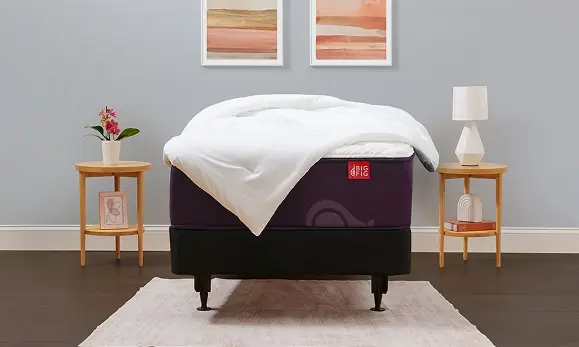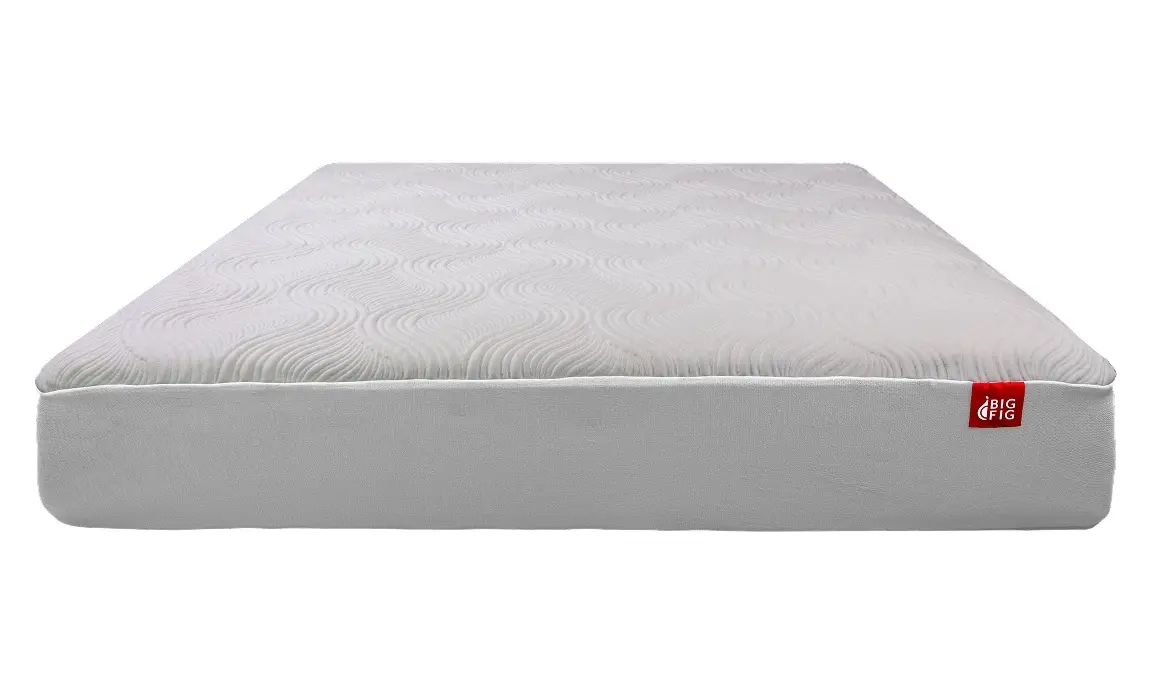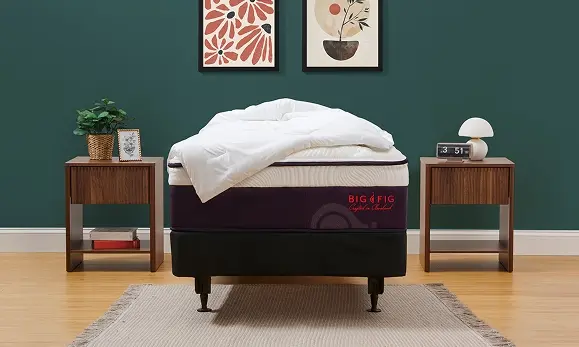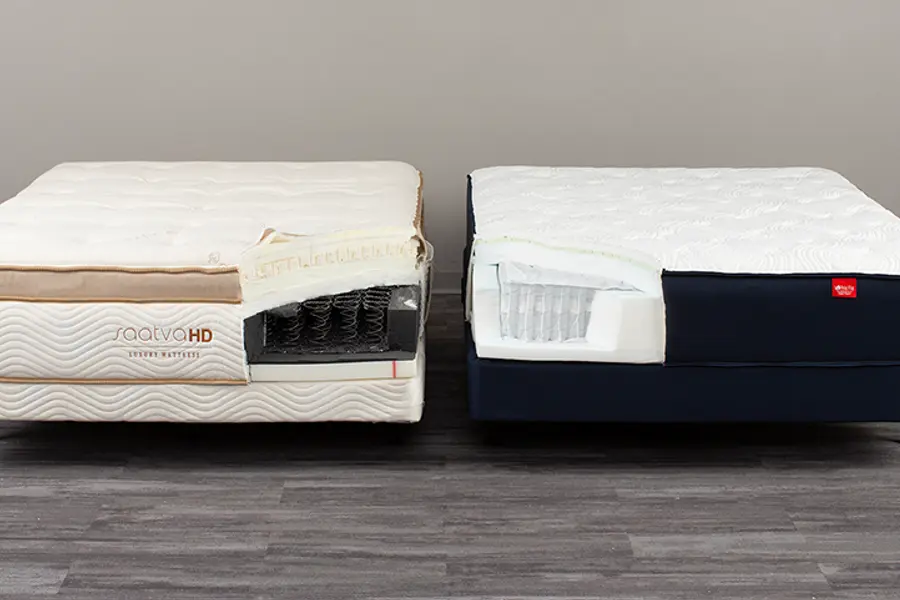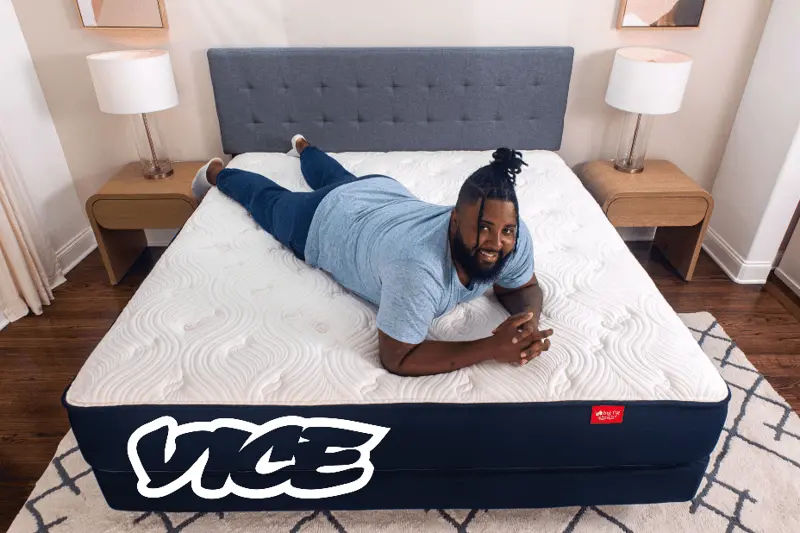Prefer to sleep on your side? You’re not alone. Research shows that approximately 60% of adults prefer side sleeping. Good choice! Experts agree it’s the best sleeping position — especially if you suffer from neck or back pain. Other benefits include reduced snoring (especially for us fuller-figured folks), decreased heartburn risk, better digestion, and improved spine alignment. Of course, your preferred pose is only part of the equation when it comes to quality sleep. Your mattress choice can help or hinder the comfort of your side slumber. Which one is best? Let’s take a deep dive so you can ensure you're maximizing your snooze sessions.
What Type of Mattress is Best for a Side Sleeper?
A medium to medium-soft mattress is often recommended for side sleepers because it offers the right balance of cushioning and support. Here's why:
Pressure Relief
Side sleepers experience more pressure on their shoulders and hips than back or stomach sleepers. A medium—to medium-soft mattress provides adequate cushioning to alleviate pressure on these areas, reducing the risk of discomfort and pain.
Conformance
These mattresses are soft enough to contour to the body's shape, helping distribute weight evenly. This contouring effect is crucial for side sleepers, allowing the mattress to adapt to your full-figured body's natural curves.
Spinal Alignment
While side sleepers need cushioning, they also require support to maintain proper spinal alignment. A medium to medium-soft mattress helps keep the spine aligned while providing enough support to prevent excessive sinking.
Enhanced Comfort
Medium to medium-soft mattresses often strike a balance between softness and support, offering a comfortable sleeping surface that helps side sleepers get a good night's rest without feeling too stuck or unsupported.
What Type of Mattress is Worst for Side Sleepers?
Certain types of mattresses can be less than ideal for side sleepers. Here are a few to be cautious of.
Extremely Firm
A firm mattress doesn’t provide enough cushioning for the shoulders and hips. When side sleepers lie on a firm surface, these areas can press too hard against the mattress, leading to discomfort and potential pain.
Old or Worn-Out
As the mattress wears out, it may no longer provide ample cushioning. Lack of padding can increase pressure on the shoulders and hips, which are critical areas for side sleepers.
Overly Thin
An overly thin mattress may not provide the necessary cushioning, support, and pressure relief needed as a side sleeper. A mattress with adequate thickness helps ensure proper spinal alignment, reduces pressure points, and enhances overall comfort, making it a better choice for side sleepers.
Inadequate Pressure Relief
Mattresses with poor pressure relief, such as some low-quality innerspring models, might not contour well to the body. This lack of contouring can increase pressure on sensitive areas like the shoulders and hips when lying on your side.
Poor Foam Quality
Low-density or poorly made memory foam may not offer the durability or pressure relief needed for a comfortable side-sleeping experience. It might break down more quickly and not conform well to your body.
Side Sleepers — Try Big Fig
We may be biased, but we believe the Big Fig mattresses are the best solution for side sleepers. Our mattress meets all the criteria full-figured side sleepers need for comfortable, pain-free sleep. We’re talking about three layers of high-density Poly Foam for no-sag cushioning and 1,6000 Individually Wrapped Coils to avert poor alignment — that’s 50% more than the average direct competitor. As with all of our products, we carefully sourced the highest-quality materials to provide you with the best support for up to 20 years. Not sure which mattress is best for you? Take our Bed Builder quiz today and get sent your curated results in minutes.


